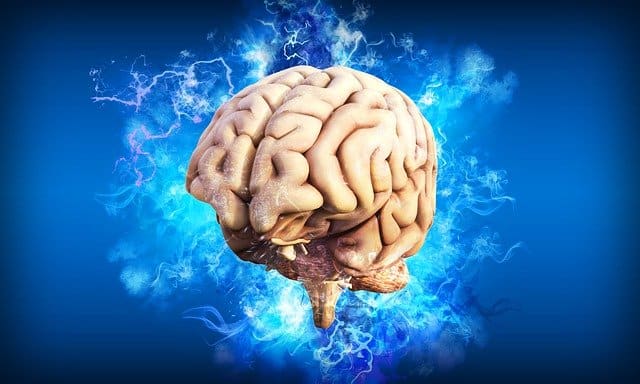Table of Contents
Trauma and Brain Function [3 Ways Abuse Damages The Brain]
Have you ever wondered how PTSD, phobias, obsessions, hyper-vigilance, pervasive trust issues, addictions, and eating disorders develop? You’ll better understand how these conditions arise by recognizing the connection between trauma and brain function. Here are 3 ways chronic abuse can damage structures within the brain.

The Connection Between Trauma and Brain Function
1. Shrinkage of the Hippocampus
Trauma and chronic abuse has been shown to damage brain cells within the hippocampus, causing it to decrease in size. The hippocampus is found within each temporal lobe of the brain, and is associated with learning and memory.
Shrinkage can lead to problems with memory and the ability to learn new things. A reduction in size also correlates to post traumatic stress disorders, such as complex (CPTSD) and PTSD. Elevated cortisol, a major stress hormone, is also implicated in reduced hippocampal size.
If you’ve been under stress and are having problems with remembering things, or struggle with new concepts and how to implement them, this could be why. It may also explain the phenomenon of cognitive dissonance, which keeps victims in a tangled web of confusion, contradictory beliefs, and conflicting attitudes.
2. Enlargement of the Amygdala
Prolonged psychological and emotional abuse can also lead to changes in the amygdala, the part of the brain where primitive emotions, including shame, guilt, envy, and fear reside. The amygdala is often referred to as the reptilian brain.
Chronic fear and anxiety, even low-grade, can cause victims of abuse to react from the amygdala, which is also associated with the fight or flight response. Being exposed to toxic behavior every day for years can keep the flight or flight branch of the autonomic nervous system activated.
Chronic stimulation of the fight or flight response is implicated in numerous physical repercussions that keep the body in a state of imbalance. Victims of abuse have amygdalas that are chronically overstimulated. This constant state of alert can lead to pervasive fear and anxiety long after the threat has passed.
PTSD, phobias, terrorizing flashbacks, obsessive thoughts, being constantly vigilant, and an ongoing inability to trust can all be the result of this continual stimulation of the amygdala, which is our fear-detector and emotional-regulator.
3. Abuse and the Prefrontal Cortex
The prefrontal cortex is the part of the brain that lies directly behind the forehead. It houses thought processes and the executive functions. It’s what sets us apart from animals.
Abuse affects the prefrontal cortex, and in turn, the ability to think logically and clearly. This is one reason your thought processes are so cloudy after abusive episodes. It’s also why victims remain in abusive situations. Without the ability to think clearly, it would be almost impossible to be level-headed enough to devise a concise plan that would enable them to escape the situation.
Abuse can also lead to impulsive behavior and clouded judgement. Add in the fear due to an enlarged amygdala, and the memory and learning difficulties from a smaller hippocampus, and you can see why victims of abuse can remain stuck in toxic situations for prolonged periods.
The impact of continually being in the fight or flight response doesn’t help matters as energy levels are reduced as a result of the adrenal glands being overworked. Throw in the terror of being manipulated, gaslighted, and stonewalled, and you can see why victims of abuse can become paralyzed and unable to act.
It Was Hard But Worth It
Dealing with the court system, along with all the other facets of divorce, is not for the faint of heart. Being at the top of your game would certainly make the process easier, but the very fact that you’re even contemplating divorce, means you’re probably not at the top of your game.
Speaking from experience, the dissolution of my marriage required every ounce of strength I had. Boldness and bravery are necessary ingredients to change the direction of your life, along with realizing that change is never easy when you’re in the midst of it. It’s just part of the deal…
Yes, leaving an abusive relationship is hard, but the alternative would have been far worse, and frankly, undoable. At least, I knew I was making progress while I was in the middle of my mess. Progress speaks volumes on so many levels. Progress is motivating and empowering.
God will step in when you decide to act. You won’t know all the answers, and it will be scary, but He’ll carry you through.
I have to say that I wouldn’t trade being single and FREE for anything. It was worth all the struggle and all of the pain to get where I am today. If I can do it, you can too! Life is too fleeting to sell yourself short. Being in a toxic relationship IS selling yourself short.
Damage from abuse does not happen overnight, it’s the result of cumulative trauma that takes place over years and sometimes decades. In fact, victims may not even know they’re being abused in the beginning stages. It takes awhile to parse out what’s happening.
“You cannot change your destination overnight, but you can change your direction overnight.”
Jim Rohn
I hope this post has provided you with some clarity on why you may feel immobilized if you’re in an abusive situation. The effects of abuse are REAL. Please don’t underestimate what is happening to you. The longer you stay, the more risk you incur. Knowledge and understanding are the first steps to changing the direction of your life.
Do any of these brain symptoms sound familiar to you? Drop me a comment below. I would also love for you to join my new Facebook group The Toxic Relief Room.

References:
(1) US National Library of Medicine National Institutes of Health: Childhood Trauma Associated With Smaller Hippocampal Volume in Women With Major Depression
(2) US National Library of Medicine National Institutes of Health: Traumatic stress: effects on the brain
(3) US National Library of Medicine National Institutes of Health: Amygdala volume changes with posttraumatic stress disorder in a large case-controlled veteran group
(4) US National Library of Medicine National Institutes of Health: The effects of stress exposure on prefrontal cortex: Translating basic research into successful treatments for post-traumatic stress disorder

